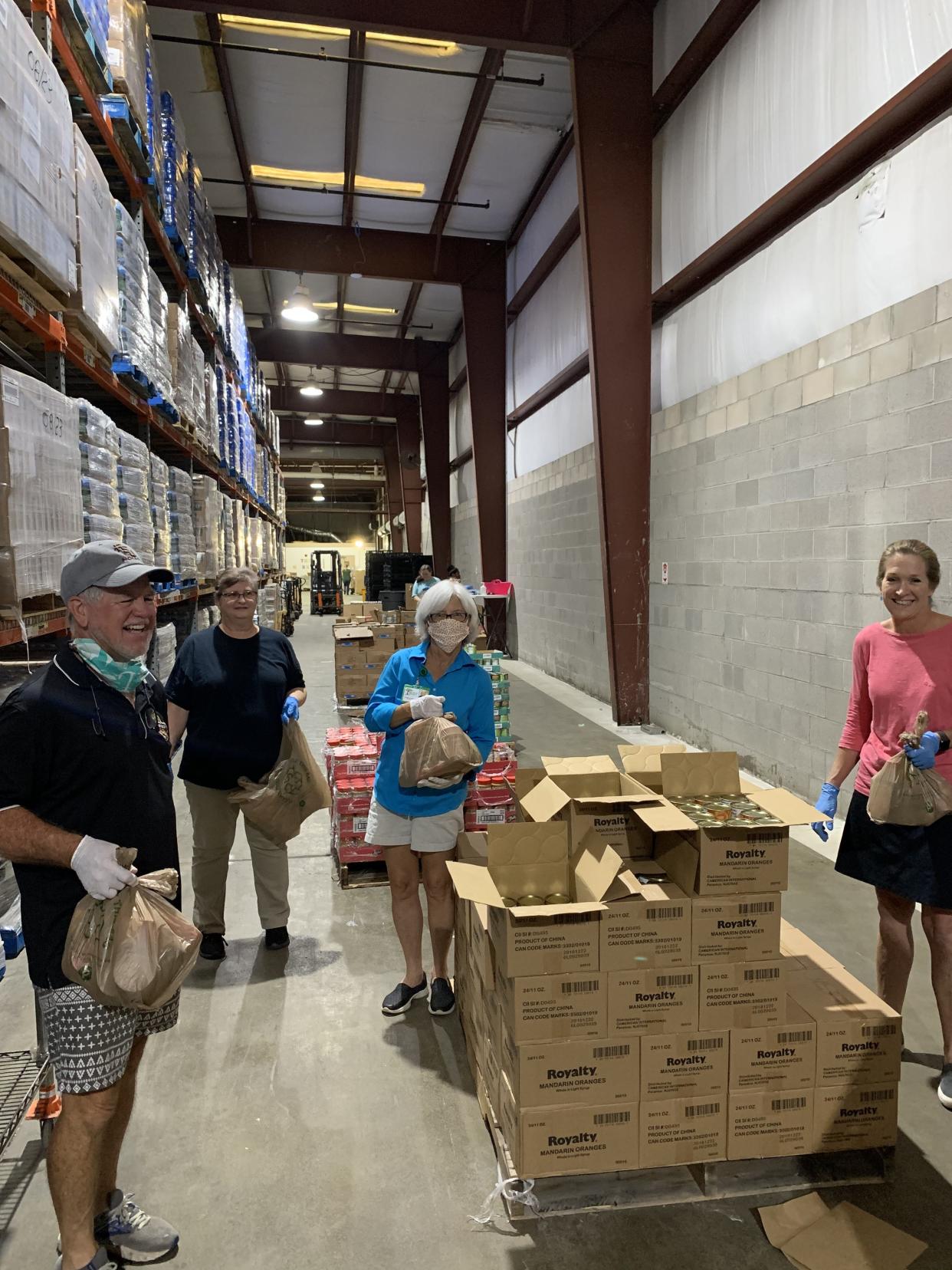Inflation causing spike in hunger, food insecurity |Mahoney

The record inflation that continues to grip the country, including Florida and most definitely the Big Bend area, is illustrated by an increase in food insecurity, including hunger in sectors of the community.
Various resources are available to help address the needs of those most vulnerable groups. Among these are summer feeding programs as well as food banks such as the Second Harvest of the Big Bend (part of the Feeding America Network).
Alzheimer's: Floridians desperately need new Alzheimer's treatments | Opinion
Healthy living:: Men's Health Month: Here's to a healthy heart, guys | Mahoney
Food insecurity
Food insecurity refers to the U.S. Department of Agriculture’s measure noted as lack of access, at times, to enough food for an active healthy life for all household members and limited or uncertain availability of nutritionally adequate foods.
Food-insecure households are not necessarily food insecure all the time. Food insecurity may reflect a household’s need to make tradeoffs between important basic needs, such as housing or medical bills, and purchasing nutritionally adequate foods.
Some facts about hunger in America
The following facts are provided by the national organization Feeding America:
According to the USDA, more than 38 million people, including 12 million children, in the United States are food insecure.
The pandemic has increased food insecurity among families with children and communities of color, who already faced hunger at much higher rates before the pandemic.
Every community in the country is home to families who face hunger. But rural communities are especially hard hit by hunger.
Many households that experience food insecurity do not qualify for federal nutrition programs and visit their local food banks and other food programs for extra support.
Hunger in African American, Latino and Native American communities is higher because of systemic racial injustice. To achieve a hunger-free America, we must address the root causes of hunger and structural and systemic inequities.
Statistics on food insecurity in Florida and the Big Bend
Overall, Florida is ranked 10th in food insecurity and eighth in child food insecurity. Of Florida's 67 counties, 53 have food insecurity rates that exceed 15%.
The Big Bend is also home to five of the top 10 counties in Florida with the highest rates of food insecurity. Madison (18.5%), Dixie (18.1%), Gadsden (18.0%), Jackson (16.6%), Taylor (16.4%) and Franklin (16.3%) counties rank among the highest in food insecurity within the state (Jan 29, 2021).
Feeding Florida
An excerpt from the Feeding Florida website (a Partner State Association of Feeding America, the nation's leading hunger-relief organization) notes:
“Feeding Florida is the state’s network of food banks working to solve hunger. Our statewide network unites 12-member food banks to provide a healthy, adequate, and consistent food supply to every community every day. Feeding Florida member food banks support more than 2,400 local charitable agencies, which provide food directly to individuals and families in need to ensure a hunger-free Florida. Each year, the Feeding Florida network provides food to the 3.1 million Floridians facing hunger, including over 900,000 children. Feeding Florida is a unified voice regarding hunger and food access by focusing on each community’s needs.”
Second Harvest of the Big Bend
Here's an overview from their website on what they do:
“Second Harvest of the Big Bend provides healthy food and other needed items for low-income and unemployed people to relieve situations of emergency and distress. As the region’s primary source for charitable food, Second Harvest acts as a storage and distribution depot for over 149 smaller front-line agency partners (emergency food pantries, soup kitchens, homeless shelters, children’s homes, homes for the mentally disabled, and domestic violence shelters in 17 Florida counties — 11 counties in our Feeding America service area (Calhoun, Gadsden, Gulf, Jackson, Jefferson, Leon, Liberty. Madison, Taylor and Wakulla, plus six counties under agreement with other North Florida food banks (Gadsden, Madison, Leon, Jackson and Jefferson) are among Florida’s most food-insecure."
Additional information/resources
Check out the Feeding America’s website for information on food rescue, food safety, foods that nourish, food security and more at feedingamerica.org.
Information on The Second Harvest of the Big Bend’s Food Bank (part of the Feeding America network) can be accessed at fightinghunger.org.
Free summer meals for kids under 18 are available across Florida through Summer BreakSpot. Information on finding locations and other details is at summerbreakspot.org
Check out the recent guest editorial on food insecurity in the United States and Florida published in the Florida Times-Union on March 13 at jacksonville.com.

Mark A. Mahoney, Ph.D., has been a Registered Dietitian/Nutritionist for over 35 years and completed graduate studies in Nutrition & Public Health at Columbia University. He can be reached at marqos69@hotmail.com.
This article originally appeared on Tallahassee Democrat: Inflation adding to hunger, food insecurity in U.S., including Florida

